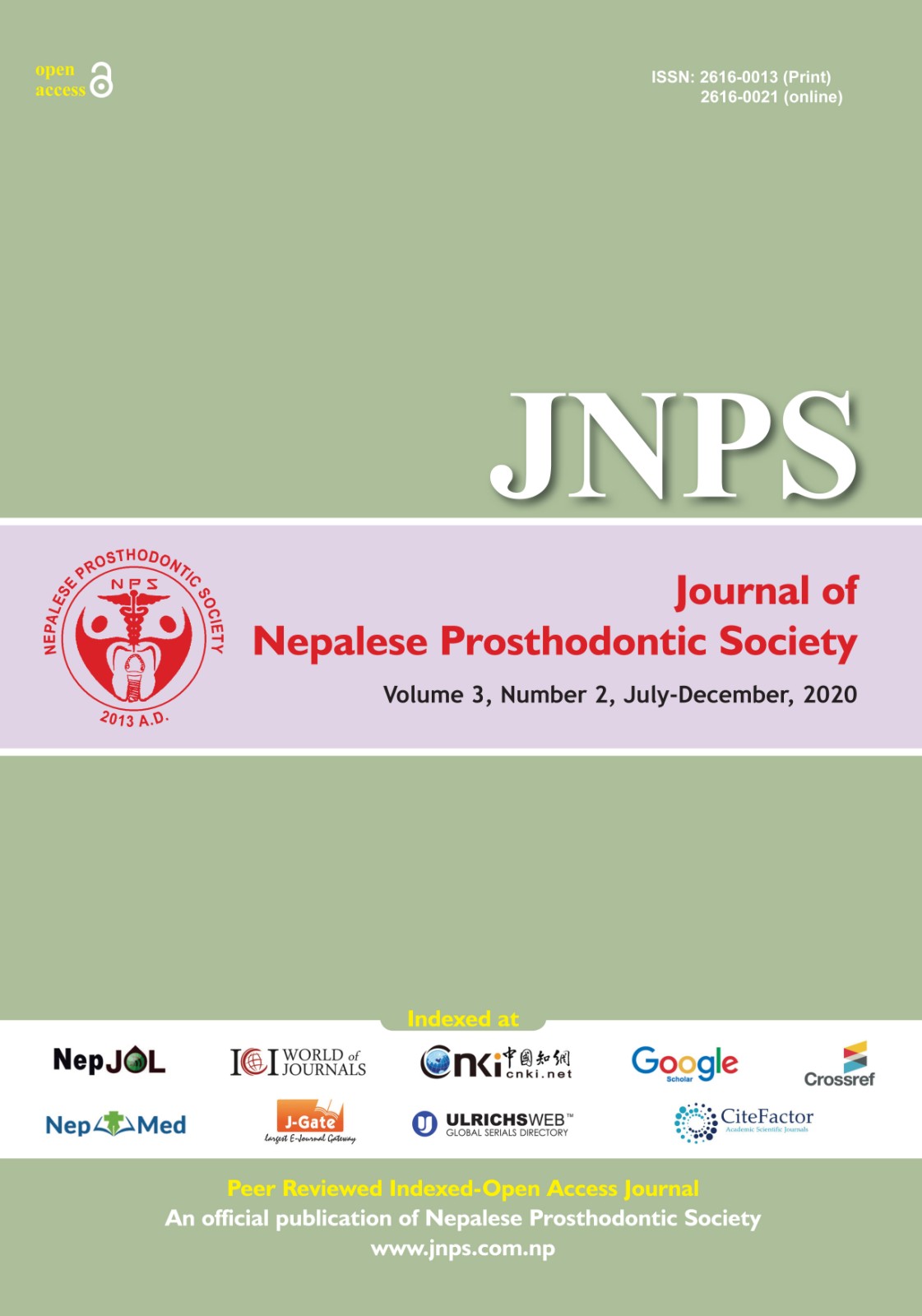Temporomandibular Disorders and Perceived Emotional Stress Among Medical and Dental Students Studying in a Private Medical Institution in Kathmandu, Nepal
DOI:
https://doi.org/10.3126/jnprossoc.v3i2.36375Keywords:
Cohen perceived stress scale;, Fonseca amnestic index;, Stress;, Temporomandibular disordersAbstract
Introduction: Temporomandibular disorder (TMD) is a collection of complex signs and symptoms that typically involves the temporomandibular joint (TMJ) and masticatory muscles. Multifactorial etiologies of TMD include occlusal disharmony, oral habits, dysfunction of masticatory muscles and adjacent structures, emotional stress, and extrinsic and intrinsic changes on TMJ structure. Stress has been inflicted as one of the major etiological factors for developing TMD.
Materials and Methods: An observational cross-sectional study was conducted among the medical and dental undergraduate students and interns studying in Nepal Medical College and Teaching Hospital, Kathmandu, Nepal from January 2018 to February 2018. Fonseca Amnestic Index (FAI) was used to evaluate and characterize the TMD signs and symptoms. The stress factor was assessed by the Cohen Perceived Stress Scale (CPSS-10) which is a self-report measure of stress level which consists of 10 questionnaires in which the subjects respond on how much they suffer from the listed symptoms. Data were analyzed using the Statistical Package of Social Sciences (SPSS) Version 16.0. Association of different variables was tested, with Chi-square test, with a value less than 0.05 as statistically significant.
Results: A total of 487 students had participated. Among them 32.4%were male and67.6%were female. Among the participants, 44.6%were from dental school (BDS), and 55.4%were from medical school (MBBS). The age group of the participants was 17 to 27 years. The prevalence of TMD was 50.3% in the study participants. Among the participants with TMD, 81.2% had mild TMD, 17.2% had moderate TMD and 1.6% had severe TMD. Out of the total participants, 16.4% had low stress, 76.6% had moderate stress and 7% had high stress. This study showed a statistically significant association between stress factor and temporomandibular disease (p <0.001).
Conclusion: Higher rate of TMD and level of stress has become common in medical and dental college students. Identifying the TMD at an early age can control or at least minimize its long-term effects. Moreover, identifying the stress factor highlights the importance of providing support programs and implementing preventive measures to help students.
Downloads
Downloads
Published
How to Cite
Issue
Section
License
This license enables reusers to distribute, remix, adapt, and build upon the material in any medium or format, so long as attribution is given to the creator. The license allows for commercial use. © The authors




